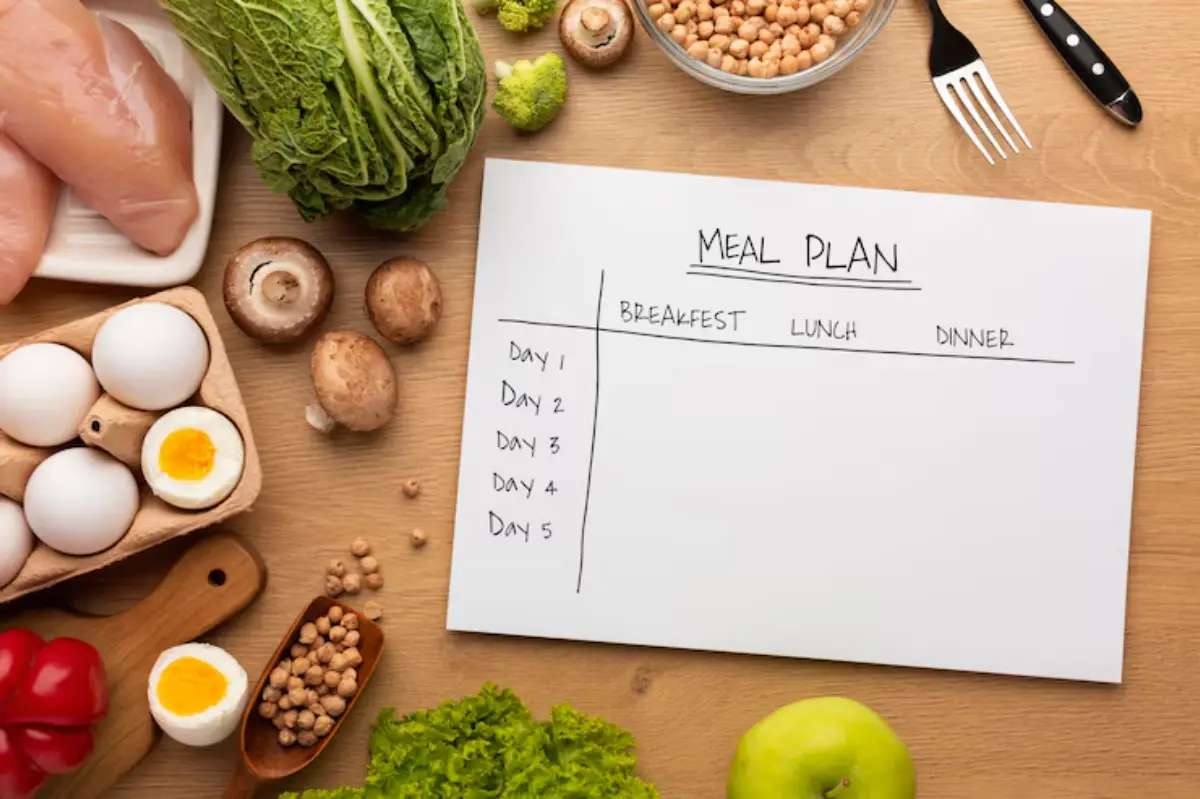
How to Create a Weekly Meal Plan That Actually Works
Ever stared into the fridge at 5:45pm and wondered, “What on earth are we having for dinner?” You’re not alone. Between school runs, work deadlines, and after-school activities, it’s easy to let mealtimes slide into chaos.
A reliable weekly meal plan can be your lifesaver. It brings structure to your evenings, saves you money, and eliminates that dreaded last-minute dinner scramble. More importantly, it can turn dinnertime into a moment of connection with your family — not stress.
This guide is here to help you build a meal plan that actually works. Not the aspirational, Instagram-worthy type — but one that suits real life. We’ll explore how to set up a meal planner for families, build a functional family dinner schedule, and stay flexible while staying sane.
The Secret Sauce: What Makes a Weekly Meal Plan Work?
It Fits Your Lifestyle
Your plan needs to reflect your actual week — not a fantasy version of it. Got football practice on Tuesdays? Plan a quick reheat meal. Working late on Thursdays? Hello, slow cooker.
It’s Flexible
Things happen. Kids get sick. You get stuck at work. A good plan allows for swaps and skips. Build in one or two “float” meals or leftovers nights.
It’s Inclusive
When everyone in the family feels involved — from choosing meals to setting the table — they’re more likely to enjoy mealtimes. Ask your kids what meals they love, and mix them into your rotation.
It’s Repeatable
You don’t need 30 new meals a month. Rotate a core set of 10–15 family favourites, sprinkle in new recipes, and you’re golden.
“Meal planning isn’t about perfection — it’s about preparation.”
Building Your Family Dinner Schedule

Step 1: Audit Your Week
Before you start scribbling meals onto a planner, take a look at your actual weekly calendar. Mark:
- Busy evenings
- Nights when you have time to cook
- Leftover opportunities
- Family members’ preferences (e.g., vegetarian nights)
Tip: Use a visual planner (digital or printable) to get a bird’s-eye view.
Step 2: Choose Your Meal Types
Rotate through themes or categories to make meal picking easier:
- Meatless Monday (e.g., veggie curry, pasta primavera)
- Taco Tuesday (fun, customisable)
- One-Pot Wednesday (easy clean-up)
- Leftovers Thursday (minimise waste)
- Freezer Friday (heat-and-eat meals)
- Special Saturday (family cooking night)
- Slow Cooker Sunday (prep it and forget it)
For more ideas, check out Taco Tuesdays & Pizza Fridays: Building Weekly Traditions.
Step 3: Involve the Family
- Ask each family member for one favourite meal per week.
- Let kids help pick side dishes.
- Make it fun — maybe a spinning meal suggestion wheel or picking from a jar.
Pro Tip: Write the chosen meals on a chalkboard or whiteboard in the kitchen.
Step 4: Build Your Grocery List
Create your shopping list at the same time as your plan. Sort it into categories:
- Produce
- Proteins
- Dairy
- Pantry staples
- Snacks
Step 5: Prep Smart
You don’t need to cook everything on Sunday. But chopping veg, marinating meat, and portioning snacks ahead of time will save you loads of stress during the week.
Sample Weekly Meal Plan (With Recipes!)
Here’s a 7-day meal planner for families that you can steal, tweak, or totally steal and pretend it’s yours (we won’t tell).
| Day | Meal | Notes |
| Mon | Veggie Stir-Fry with Rice | Quick, uses frozen veg |
| Tue | Chicken Tacos | Add guac, salsa, cheese — family-style! |
| Wed | One-Pot Pasta with Broccoli | Only 15 mins & one pan |
| Thu | Leftover Tacos or Stir-Fry | Use it up! |
| Fri | Frozen Pizza & Salad | Minimal effort night |
| Sat | DIY Burger Night | Kids assemble their own |
| Sun | Slow Cooker Beef Stew | Start in the morning, enjoy at dinner |
Tools That Make Planning Easier
Best Apps for Planning

- Mealime: Quick recipes, auto-generated shopping lists
- Plan to Eat: Great for storing family recipes
- Paprika: Recipe saver + meal planner + grocery list
Physical Tools
- Magnetic fridge planners
- Dry erase boards
- Meal planning notepads
- Colour-coded post-its (one colour per family member)
Kitchen Time-Savers
- Instant Pot
- Chopping aids
- Stackable meal prep containers
Overcoming Common Meal Planning Challenges
1. “I Don’t Have Time”
You’re already spending time thinking about meals every night. Planning upfront actually saves time. Start with just 3–4 planned nights if the whole week feels overwhelming.
2. “My Kids Are Super Picky”
Include at least one “safe food” each night. Let them serve themselves. Over time, variety becomes the norm.
3. “We Always Forget What’s in the Fridge”
Use a whiteboard for fridge inventory or stick notes on containers. “Eat this by Thursday” helps eliminate waste.
4. “I Hate Repeating Meals”
Rotate by theme, not dish. Monday doesn’t always have to be the same meatless meal — just the same type of meal.
Making It Stick: Habits for Long-Term Success
Set a Weekly Planning Ritual
Choose one time every week — maybe Sunday after breakfast — to sit down and plan. Keep it short (20–30 mins max).
Create a Recipe Bank
Use a notebook, app, or spreadsheet to save tried-and-true meals. Tag them with labels like:
- 15-min
- Freezer-friendly
- Kid-fave
- Budget meal
Keep a Backup Plan

Always have:
- Eggs & toast
- Pasta & jarred sauce
- Frozen soup
- Cheese toasties
You won’t always follow your plan perfectly — and that’s okay!
You’re Closer Than You Think
Creating a weekly meal plan that actually works doesn’t mean crafting a gourmet calendar or spending hours chopping veg every Sunday. It’s about making intentional, realistic decisions that serve your family.
With a bit of structure, a few tools, and input from the people who eat the meals, you can reclaim dinnertime and even — dare we say it — enjoy it.
So why not start this week? Jot down a few meal ideas, build out your planner, and take it one meal at a time.
Want help prepping? Dive into our Beginner’s Guide to Family Meal Prep Sundays.


